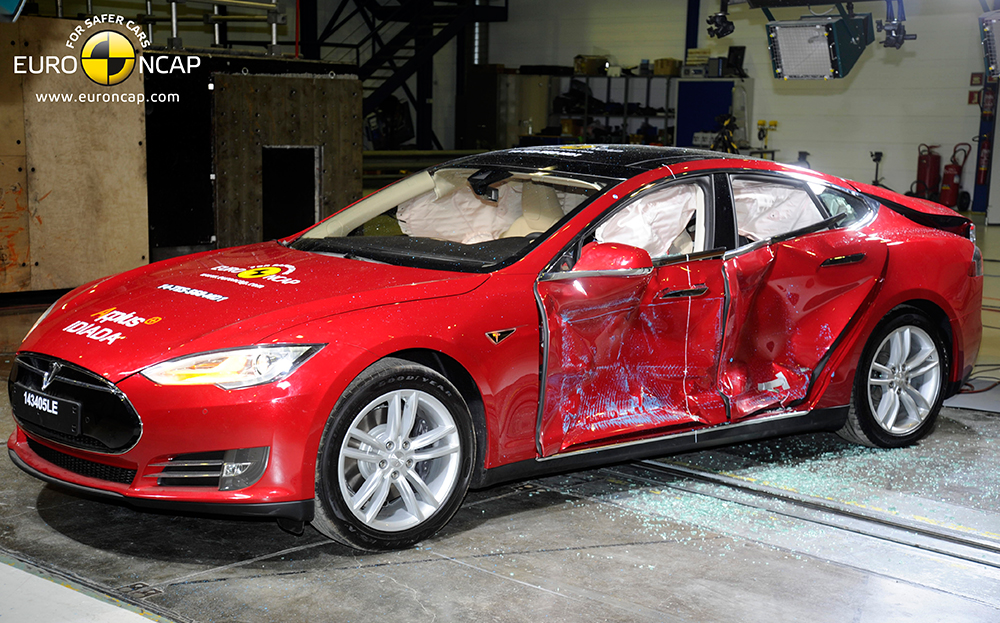News: Tesla Model S electric car gets five star safety rating from Euro NCAP
It's a mean, green, safety machine

IT’S AMAZING what removing an engine – that big, heavy lump of metal – from between the front wheels will do for a car’s crash safety rating. Fill that space with air, as is the case in a Tesla Model S pure-electric car, and it becomes a very effective “crumple zone” in which energy from a frontal impact can be more easily absorbed.
This engineering approach has helped the Tesla to a maximum five star rating in the latest round of crash tests from the safety experts in white coats over at Euro NCAP. Tesla says a low centre of gravity, thanks to the underfloor battery pack, reinforced aluminium structure and active safety systems also helped the Model S to its maximum score.
It follows top marks in all categories when it was crash tested by the U.S. National Highway Traffic Safety Administration (NHTSA) in 2013 (only 1% of cars manage that); to also achieve five stars in the arguably more complex Euro NCAP test, as it has now done, is quite an achievement. The Model S is only the third car to have done “the double” since 2011, when the new NHTSA test was introduced.
EuroNCAP gave the Model S high praise for protection of adults and children in frontal and side impacts, particular with regard to pretection of the knees and legs of the driver and passenger, although it did note a “bottoming out” issue with the passenger side airbag, whereby there was insufficient inflation to prevent the head flattening the airbag and coming into contact with the dashboard. Euro NCAP notes that Tesla investigated the issue and found an error in the airbag calibration software supplied by the vendor.
The Model S received maximum points in the side barrier impact test but said there was marginal protection of adult occupants’ ribs in the severe side pole test.
Parents will be please to learn the the Model S scored maximum points for protection of child dummies, with Euro NCAP only quibbling over touchscreen interface language difficulties when it comes to switching off the passenger airbag for when rear-facing child seats are installed up front, as well as seat cushioning making Isofix points difficult to locate.
Euro NCAP also looked at safety assist technology equipped as standard on the car, which includes electronic stability control, seatbelt reminders, lane departure warning and speed warnings. While it noted there is no autonomous braking system, Tesla says it has a suite of autonomous driving technologies in the works and could introduce autonomous braking over the airwaves to all existing models via a simple downloadable software update.
Meanwhile, pedestrians are protected to some degree by an “active” bonnet safety system, with protection rated as adequate or marginal over most of the front of the car.
Other cars involved in this round of crash tests include the BMW 2-series Active Tourer, Skoda Fabia , Nissan Pulsar, which also all achieved the overall five stars. The Renault Mégane Hatch, which has been reassessed, achieved a four star rating while the Suzuki Celerio received just three stars.




